Awesomeness Round-Up – 1/31/2012
- By Sara Mitchell
- January 31, 2012
- 12 Comments
This is a doozy of a round-up, thanks to the American Astronomical Society meeting mid-month! Maggie already blogged about some of the interesting exoplanet news that came out at the meeting. Here, we’ll cover some of the other big astrophysics releases at AAS! But first… a gorgeous image from the European Southern Observatory.
This image of the Omega Nebula (M17 or NGC 6618) was captured by the ESO’s ground-based Very Large Telescope (VLT). The nebula contains glowing hydrogen gas and filaments of dust, the very materials needed to create the the blue-white baby stars forming in this very active stellar nursery. You can read more about the nebula and this image in the ESO press release.

Credit: NASA, ESA, M. Trenti (University of Colorado, Boulder and Institute of Astronomy, University of Cambridge, U.K.), L. Bradley (Space Telescope Science Institute, Baltimore), and the BoRG team
The visible and near-infrared composite image from Hubble above shows five tiny galaxies clustered together 13.1 billion light years away – the farthest protocluster of galaxies ever seen! The result came from the Brightest of Reionizing Galaxies (BoRG) survey, which is using Hubble’s Wide Field Camera 3 to look at the universe’s early galaxies. We’ll save our protocluster assimilation jokes.

X-ray: NASA/CXC/Rutgers/J. Hughes et al; Optical: ESO/VLT & SOAR/Rutgers/F. Menanteau; IR: NASA/JPL/Rutgers/F. Menanteau
In other news from the early universe, the Chandra X-ray Observatory and the Atacama Cosmology Telescope (ACT) in Chile have turned their eyes to galaxy cluster ACT-CL J0102-4915 – a.k.a. “El Gordo,” which means “the fat one” in Spanish. The nickname is appropriate, as this cluster is the most massive ever observed at this distance. Why are scientists interested in El Gordo? It could provide important clues to the study of dark energy and dark matter.
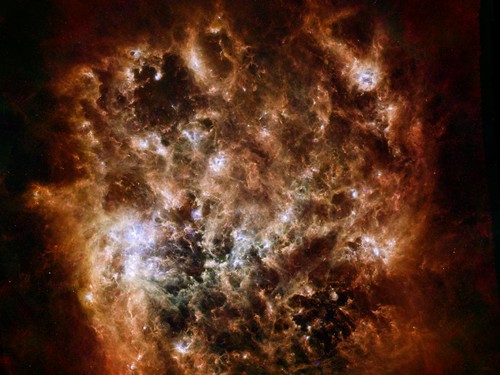
Credit: ESA/NASA/JPL-Caltech/STScI
From the farthest to the closest – Herschel and Spitzer turned their eyes to the Large and Small Magellanic Clouds, two of our nearby galactic neighbors. The image above, from Herschel, shows the Large Magellanic Cloud in the infrared and highlights the ribbons of dust and intense star-forming regions within the galaxy. Scientists are mapping the dust in these galaxies and are eager to observe star formation in neighboring galaxies – seeking information about galactic evolution that could be extended to much more distant galaxies within the universe.
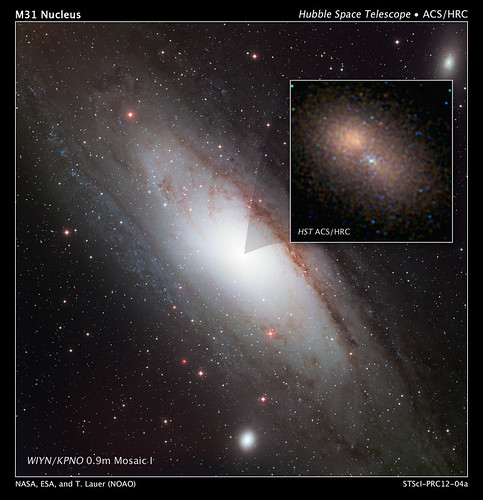
Credit: NASA, ESA, and T. Lauer (National Optical Astronomy Observatory)
Hubble has been looking at another of our neighbors, the Andromeda Galaxy, with a focus on the 100-million-solar-mass black hole at its center. The image above is the sharpest visible-light image ever made of the nucleus of a galaxy besides our own. What’s so interesting about the center of Andromeda? It gives the illusion of a double nucleus, due to the behavior of stars in the galaxy. The press release includes a neat video zoom-in onto Andromeda’s core.

Credit: NASA; ESA; B. Williams and J. Dalcanton, University of Washington, Seattle
Other Hubble research into the center of Andromeda is looking into some really weird stars that live there. While we usually associate the color blue with very young, hot stars, the blue stars at Andromeda’s hub are old, Sun-like stars that have lost their outer material and are showing their blue-hot cores. A new Hubble census of Andromeda has found nearly 8,000 of these strange stars. Scientists have caught them in a very interesting phase of stellar evolution and are interested in solving their mysteries.
NASA’s Wide-Field Infrared Survey Explorer (WISE) has mapped the entire sky two times in infrared light. The image above shows a large section of the Milky Way that includes ten star-forming nebulae. Each nebula provides scientists with a “snapshot” of star formation in progress, which they can piece together into a chain of events as they observe more regions. With increased information about how stars form, scientists can better understand the specific processes and phenomena involved.
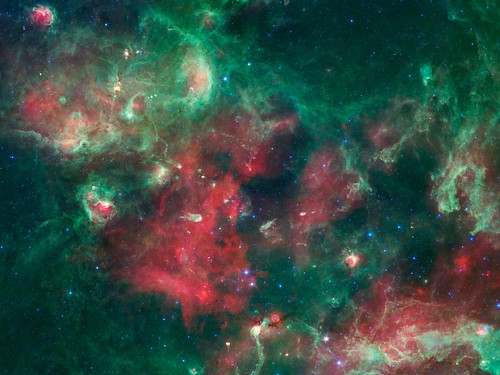
Credit: NASA/JPL-Caltech/Harvard-Smithsonian CfA
Spitzer also released new information about star formation, revealing this spectacular infrared image of Cygnus X, a very active region of star birth within the Milky Way. The image shows dynamic bubbles, pillars, filaments, and other hallmarks of active star formation. By studying the region in the infrared, scientists can see into regions where visible light is blocked.
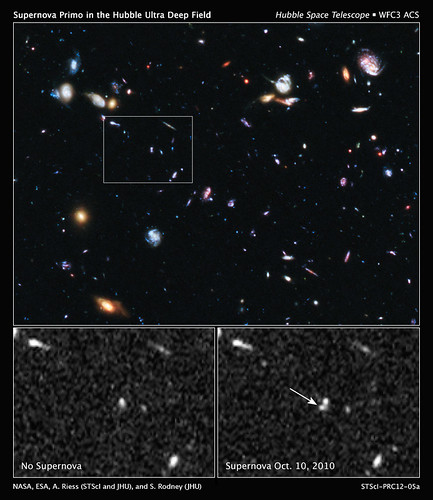
Credit: NASA, ESA, A. Riess (Space Telescope Science Institute and The Johns Hopkins University), and S. Rodney (The Johns Hopkins University)
From birth to death… these three Hubble images capture a supernova explosion that occurred in 2010. This particular supernova has been nicknamed SN Primo, and belongs to a special class of supernova called Type Ia that result from the explosion of white dwarf stars. SN Primo is the farthest Type Ia supernova we’ve found, and scientists have confirmed its distance through spectroscopy. Scientists are looking for more Type Ia supernova, hunting for clues about their origins.
Ok, this isn’t astrophysics, but it’s worth a mention. If you haven’t seen this gorgeous new image of our planet, be sure to take a look:
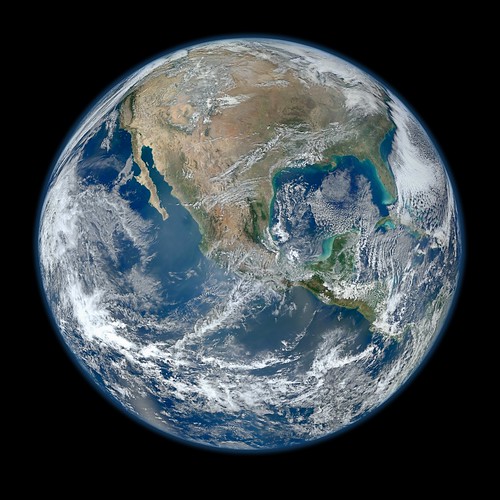
Credit: NASA/NOAA/GSFC/Suomi NPP/VIIRS/Norman Kuring
The data from this image was captured on January 4, 2012 by the VIIRS instrument aboard NASA’s most recently launched Earth-observing satellite – Suomi NPP.
More detail available on NASA Goddard’s Flickr
Here’s a little glimpse at what’s going on in one of the cleanrooms at NASA Goddard:
Here they are working on the Thermal Infrared Sensor (TIRS) that will fly on the next Landsat satellite.
A solar event sent two blasts of particles at us on January 19th, which resulted in beautiful displays of aurora.
Here is one image of the sun during the event made from SOHO and SDO data:
And you can see lots of amazing photos and video of the aurora at this “Aurora Borealis of the Day” article.




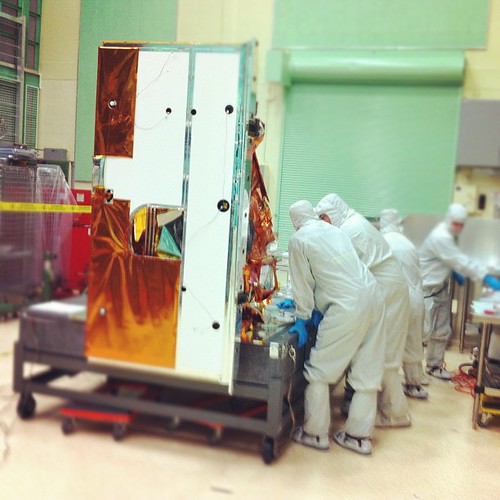
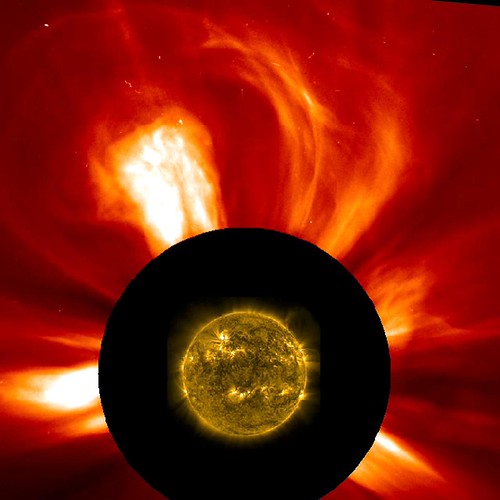

The images are just fantastic and the article is very well written. You are proof that our tax money is not going to waste, or in my case for ESA.
Keep up the good work guys and continue to make us proud. best wishes
The aurora is amazing!
It’s always wonderful to learn about what’s going on outside of this world. These pictures are amazing!
amazing images of the sky
amazing photo!
Those are some amazing photos of the sky. I made first picture as my desktop background.
I’m amazed at how clear those pictures are. Its unreal to me how much technology has improved in the last 30-40 years. Keep up the awesome work
This is what keeps me amused always. Amazing pics. Always aim for the sky.
Those images are so so beautiful!
I am wondering how many pixels were used!
Kenny – I’m not sure – and it would depend on which image you are referring to! Is there a specific one that you were wondering about?
Best pictures ever!
more awesomeness in feb The Helix Nebula